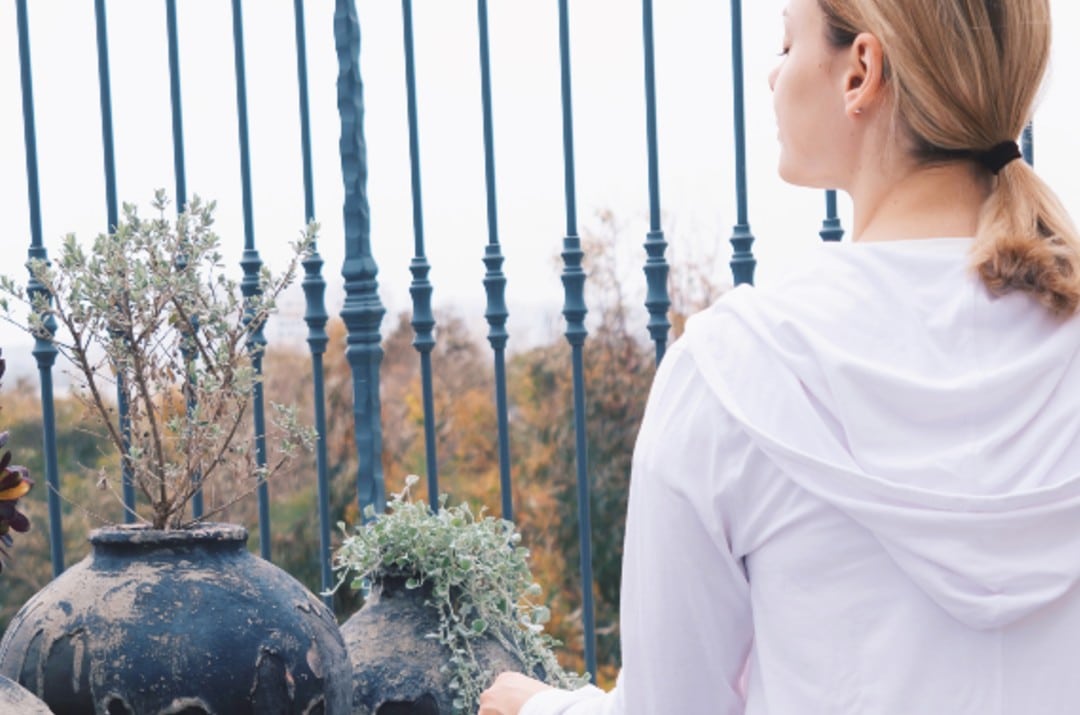You might be one of those go-getters who say’s “I’ll sleep when I’m dead,” but relaxation is a serious matter.
Relaxation is anything but wasting time. It is vitally important to your physical and emotional health, so you can take life by the reigns in full force. In fact, it’s so important that there is a national holiday for it. August 15th marks National Relaxation Day, which is a designated day for taking that extra time for yourself. It is intended to promote relaxation, even if only for a short period of time so you can stay on top of your health and productivity.
Relaxation means something different to everyone so it is important to find a healthy method of relaxation that best works for you.
Here are 8 simple, healthy ways you can achieve relaxation!
Tips To Relax Both the Body and the Mind
Studies have demonstrated that there are detrimental effects of long term stress on the body. That’s why it is important to relax.
Some of which include:
- Headaches
- Stomach disorders
- Rapid heart rate
- Depression or other mental illnesses
- Physical aches and pains
- Tight muscles
Relaxation will help combat these symptoms of long term stress while promoting a healthy mind and a positive mood.

1. Be aware.
The first step is always awareness. Acknowledging your state of mind and paying attention to what your body needs to destress will allow you to best take advantage of any of the following methods of relaxation.
It is common for people to ignore their stress in hopes of stressors simply passing by, but it truly is not that easy. These stressors build up and therefore tend to catch you off guard, resulting in one feeling overwhelmed and potentially irritable.
A concept called calm awareness maintains the idea that we control our own emotional states and we can choose to be more relaxed simply by utilizing awareness, otherwise known as mindfulness. Although most linked to Eastern spirituality, it is a practice gaining wide adoption in clinical settings due to its ability to help ease anxiety, depression, and even symptoms of pain.
In short, mindfulness is the practice of bringing your attention to the present moment, noting your thoughts, feelings, and sensations without judgment. In the words of Ram Dass, a worldwide authority on spirituality, yoga, and meditation; it is to remember to “Be Here Now.”
The ability to shift from emotional patterns to mass consciousness paired with self-awareness and stability of mind are the tools necessary to achieve emotional freedom of choice- to choose your attitude.
In “Man’s Search For Meaning” by Viktor E. Frankl, the author explores this concept as one of “the last human freedoms.” Frankl expresses the importance of attitude in how people respond to life events and how that can make or break experiences. Your day might be stressful, but you can choose how you respond noticing the stress and moving through it. In other words, becoming around of your thoughts, feelings, and sensations of the moment; and then let it pass without judgment — just noting it was there for a purpose.
Get started with an easy awareness exercise
You can start learning awareness by focusing on chocolate candy like M&M’s or a piece of aromatic fruit like an orange. Go to a quiet, non-distracting place like your bedroom with a handful of chocolate candies or fruit and follow these steps:
- Sit comfortably hold the piece of candy or fruit.
- Close your eyes if you feel comfortable. Otherwise, try to ignore distractions around you like the T.V. or activity outside.
- Feel how the candy or fruit feels and describe it to yourself. Is it cold or warm, rough or smooth, dry or damp? Describe it without thinking of anything else, without judgment.
- Smell the candy or fruit with a strong deep, inhalation. What does it smell like? Describe it to yourself. Is it sweet-smelling, sour-smelling, or fruity-smelling?
- Now open your eyes and look at the candy or fruit. What does it look like? Describe it to yourself without using judging words (e.g., pretty, ugly, weird). Is it round or irregular shaped? What color is it?
- Now place it in your mouth and chew it slowly before you swallow it. Take note of its taste and describe it to yourself.
- Now you can return to the sounds around you and stay in the present moment. Do you hear music, birds, cars, or people in the background? Is it loud or faint?
As you learn to think without judgment, you can train your brain to become aware of the present moment and calm your active mind.
2. Take a deep breath.
Once you have become more self-aware, you can take it to the next level with your breath.
Breathing seems pretty simple considering it’s something we are constantly doing, but deep breathing is actually an amazing way to help your body relax. Deep breathing sends signals to your body to relieve tension and stress. It has even been proven to help with anxiety.
Deep breathing is a bit different from regular breathing, but don’t worry we have a little step by step guide to help you get started with some deep breathing exercises!
- Get comfortable in a sitting or lying down position.
- Put one hand on your chest and one right below your ribs on your stomach.
- Take a deep breath through your nose without moving your chest. Allow your stomach to fill with air as it pushes your hand out.
- Breathe out with your lips pursed and feel your hand move with the air. Allow all the air to be let out.
- Repeat 3 to 10 times.
Once you have mastered belly breathing, you can try these other types of deep breathing:
These are some exercises you can do anywhere, which makes it a great method for relaxation on the go!
3. Get moving!
If you are still not relaxed enough from the first two tips, don’t worry. Exercising can also calm those jitters and moody blues. It is said that even 10 to 15 minutes of exercise a day will make a difference in one’s mood.
Exercise reduces the level of stress hormones (adrenaline and cortisol) and stimulates the production of endorphins, which act as the body’s mood elevator and natural painkiller.
Exercise also increases one’s self-esteem due to the emotional benefits of physical improvements. Seeing your arms look stronger, or your waistline look thinner can boost your self-confidence and boost your mood. Moreover, when you are stronger in body, you’ll likely feel it in your mind too.
So walk to the bus or ride your bike instead of driving to work. Hit the gym. Or finally take the Crossfit, pilates, or yoga class. You’ll feel better after you get in the habit of moving.
4. Grab a pen and paper.
Exercising might not be your thing, but what about writing? This method is a way to help yourself without needing to rely on another party (although that can be helpful too). You can jot down your thoughts or doodle to release the tensions that could be distracting you or causing you stress.
Creativity is a highly recommended form of stress release as it allows your brain to function differently and be free to express thoughts that were potentially repressed due to more stressful environments.
When writing, it is important to be honest with yourself and allow yourself to release the emotions through pen and paper. Whether it’s a letter to an anonymous person, a journal entry, a poem, a short story, or random words; honesty is the best policy so you can truly release what is causing you stress. If you are having trouble getting started, you can create a list of thoughts and ideas that you need to release.
If you don’t consider yourself much of a writer, then drawing (even if they are just doodles) or painting, can be other greats ways to allow some built-up creativity to flow.
The bottom line: You can move stress from the mind and body onto the page to get a release. If you need help getting started, you might like The Artist’s Way by Julia Cameron.
5. Enjoy some meditation.
Meditation counts as exercise too… mental exercise!
Mental stress can cause physical changes in the body such as an increase in heart rate or blood pressure, but meditation can actually reverse these effects.
It has been demonstrated from scientific studies of Indian yoga masters that mediation can:
- Slow the heart rate
- Reduce breathing rates
- Reduce blood pressure
- Diminish the body’s oxygen consumption
- Reduce blood adrenaline levels
- Change skin temperature
Meditation does not need to be long and intense. You are meant to relax, so don’t push yourself past your point of comfort—especially if you are new to meditation. When meditating be sure to:
- Eliminate distractions— Turn off the television, your phone, and computer. Then go somewhere quiet.
- Get comfortable— Sit or lie down in a comfortable position in unrestrictive clothing.
- Release — Let go and allow yourself to accept the place your meditation is taking you.
6. Aromatherapy
While meditating, you can add a little aromatherapy to enhance the relaxing effects. Placing fragrant stress relievers around the house, in your car, or even in your office can help create a relaxing environment from a formerly stressful one, as supported by a study from the Journal of Advanced Nursing.
Some recommended scents:
- Grapefruit —for a tired or low mood
- Lavender — for frustration and stress
- Rosemary — for a mental energy boost
- Frankincense — for physical and mental stress relief
- Myrrh — for stress relief. Mix with frankincense and/or a citrus-smelling oil for maximum benefits.
7. Massage
Our final tip for you is to go out and get a massage! Studies have proven that your mind relaxes when your muscles lose tension, thus relaxing you.
We recommend that you use a good natural massage oil with aromatherapy and pain relief benefits, like CBDMEDIC™ massage oil, when getting a massage in order to promote relaxation. CBDMEDIC combines naturally-derived active ingredients menthol and camphor for a cooling sensation that can offer a penetrating relief. While the aromatherapy oils frankincense and Myrrh combine to calm your senses. Meanwhile, the natural emollients including jojoba seed oil, CBD hemp oil, and cottonseed oil come together to soothe the body.
You can suggest your oil to a licensed massage therapist for the full benefits or use it at home. If you are using an oil with camphor or menthol, remember not to touch your eyes or other sensitive areas until you wash your hands.
So Let’s Relax!
Take these 7 tips and use the ones that work best for you (or all of them) to all of your worries and tensions to drift away.


